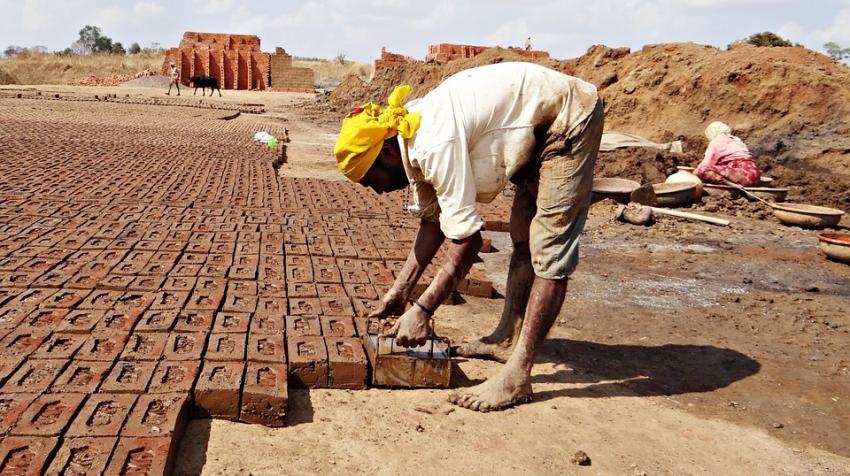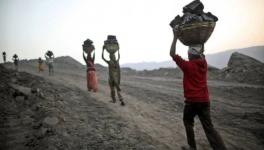Symbolic Justice is All the Unorganised Sector Can Hope For

The Supreme Court of India on March 19 delivered its Judgement in National Campaign Committee for Central Legislation on Construction Labour (NCC-CL) v. Union of India and Ors. This Judgement came 12 years after the original Writ Petition had been filed. The petition demanded the implementation of the Building and Other Construction Workers (Regulation and Employment) Act, 1996 (BOCW Act), as well as the Building and Other Construction Workers’ Welfare Cess Act, 1996. These two Acts were designed to levy a cess on construction projects for the benefit of the workers. The proceeds of the cess would be held by a Welfare Board constituted in each state or Union Territory. The Welfare Board would have to disburse 95% of the funds for the benefit of the construction workers, the remainder to be utilised for their own administrative expenses.
When the matter came up for hearing in 2008, the Supreme Court noted that despite the 12 years lapse since the Acts came into force, their provisions had not been implemented. The Court also observed that the cess was being levied by state governments, but no benefits were delivered to the construction workers. The respondents informed the Court that of the 4.5 crore construction workers, 2.8 crores had been registered under the Act, even so, the Court expressed its doubts over the efficacy of the figures. They had also found that no audits had been conducted by the CAG and that large sums were left with the Welfare Boards. The Court here too did not rule out the possibility that these funds may have been diverted under different heads of expenditure.
Finally, in 2012 the Supreme Court directed the Welfare Boards to be audited by the CAG. As well as for the Welfare Boards to meet at least once in two months as per the existing legislation. The minutes and actions taken would have to be submitted to the Secretary for Labour of the respective state. They further directed that the unutilised funds lying with the Boards would have to be deposited in nationalised banks. In 2015 the Secretary, Ministry of Labour and Employment informed the Supreme Court that the Union Government was going to provide a Universal Access Number (UAN) to each construction worker so that they need not re-register if they go to another state. The UAN would also allow construction workers to receive benefits without interruption.
The Affidavits filed by the office of the CAG showed that the cess collected was between 27,000 and 29,000 crores. These amounts were not transferred to the Welfare Boards in all states. They had found that some Welfare Boards had spent the money on washing machines and laptops for construction workers. On this revelation, the Court wondered what use washing machines and laptops could be to construction workers, many of whom are illiterate. The CAG had also found that amounts exceeding the statutory 5% limit were spent on administrative costs, whereas barely 10% had been spent on the beneficiaries of the Act.
The Court observed that these findings were a travesty of justice and that many of the beneficiaries since the Acts came into force may have either died or were entitled to a pension. However, the Court also opined that it would not be possible to disburse the funds to those who are no longer working as construction workers and hence any remedy would only be to the benefit to those currently working. In this regard, the Supreme Court issued directions to the Ministry of Labour and Employment, the state governments, and Union Territory Administrations (UTAs). Within a timeframe decided by the three concerned parties, the Court directed them to put in place and strengthen the machinery for registering establishments and construction workers. The Court also directed them to strengthen the machinery to collect cess as well as to conduct a social audit on the implementation of the BOCW Act. The Court further directed the Ministry of Labour and Employment to frame a comprehensive Model Scheme incorporating the best aspects of existing schemes. This scheme would have to be completed and publicised within 6 months.
The Court stated that “[i]n preparing the Model Scheme we expect the Ministry of Labour and Employment to include within it, inter alia, issues and concerns of education, health, social security, old age and disability pension and other benefits that are necessary for living a life of dignity as postulated by the Constitution of India.”
The Supreme Court also issued general directions to the concerned parties for implementing the Acts, such as constituting and appointing the authorities created under the statutes. The Court however also directed the Ministry of Labour and Employment to actively consider extending the benefits of existing social labour legislation to the construction workers. The Court further directed the Ministry to consider whether construction projects of the government should also be brought under the Act. The matter has been listed for hearing on May 1, the symbolism is not lost.
The petition merely sought that the two 1996 legislations be implemented. The Court in avoiding a situation of judicial overreach has issued directions to this effect. The problem here arises due to the migratory nature of construction labour. The workforce at most construction sites tends to be comprised mostly of migrants. This complicates the view that the workers are entitled to arrears of benefits. Though true, this view is impossible to implement considering that by the Government’s estimate, a third of the labour has not been registered. Therefore, as the Court stated in the opening lines of the Judgement, “[s]ymbolic justice – there is nothing more to offer to several millions of construction workers in the unorganized sector – not social justice, not economic justice.
Get the latest reports & analysis with people's perspective on Protests, movements & deep analytical videos, discussions of the current affairs in your Telegram app. Subscribe to NewsClick's Telegram channel & get Real-Time updates on stories, as they get published on our website.
























